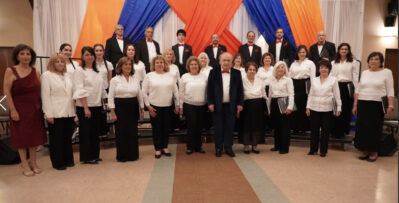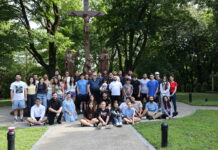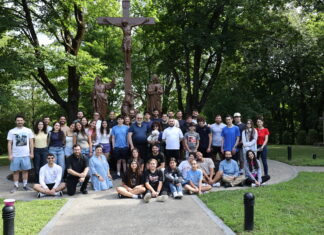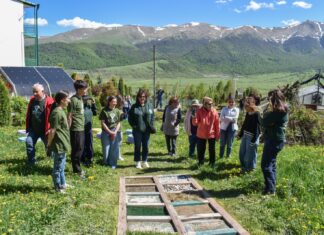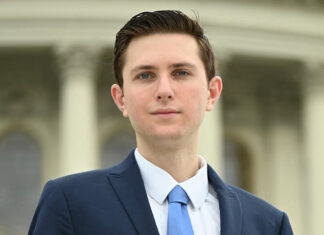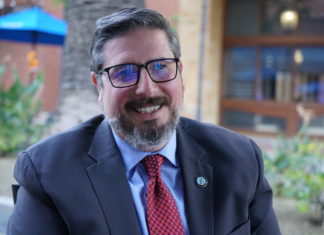By Alin K. Gregorian
Mirror-Spectator Staff
BELMONT, Mass. — Filmmaker Dr. Carla Garapedian is hopeful that the new agreement on the digitization of the archives of the late Dr. J. Michael Hagopian by the University of Southern California Shoah Foundation Institute will preserve the interviews captured by Hagopian in perpetuity.
During a talk at the National Association for Armenian Studies and Research (NAASR), Garapedian explained how the Armenian Film Foundation, which was founded by Hagopian, and on whose board she serves, is collaborating with the Shoah Foundation to preserve the 400 survivor testimonies that Hagopian recorded.
The Shoah Foundation Institute, now part of the USC Dana and David Dornsife College of Letters, Arts and Sciences, will digitize the Armenian oral histories, making that collection one of the largest of Holocaust and Genocide testimonials. The aim is to add similar testimonials from other countries, including Cambodia and Rwanda.
Basically, the Armenian collection will be shared with Shoah, “without losing ownership.”
Garapedian spoke about the Shoah Foundation, which was started by director Steven Spielberg after he completed the movie, “Schindler’s List,” about the horrors of the Holocaust (incidentally with a screenplay by Steve Zaillian). “A number of survivors contacted him and said ‘get my story,’” Garapedian said.
The foundation’s aim is to record as many oral histories of Holocaust survivors as possible, much like what Hagopian started with the Armenians. There are currently 52,000 testimonials on film. The interviews were originally kept in Spielberg’s office on the Universal Studios lot, but then he started to worry about properly housing them so that they do not deteriorate. As a result, he started working with USC.
